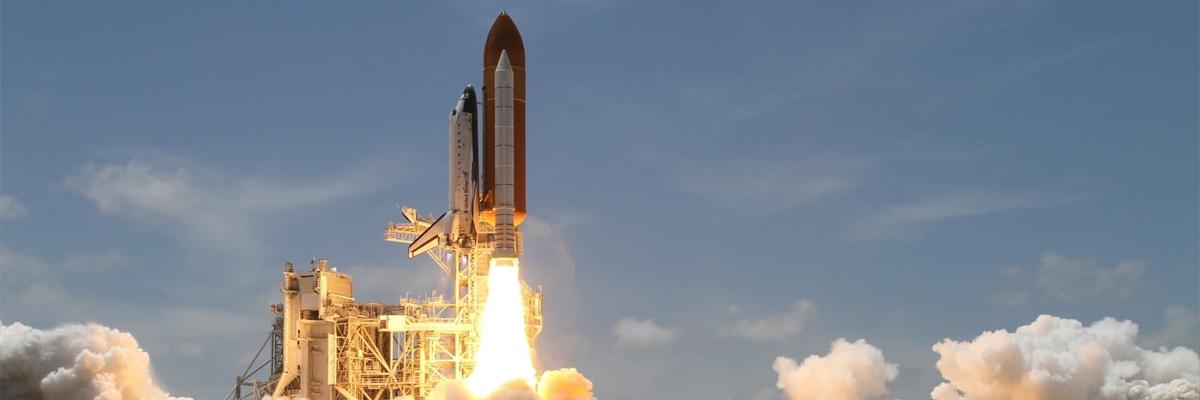Live
- BJP expecting its 'best show in South' on back of PM Modi's popularity, says HM Amit Shah
- Mahabubnagar MP Seat Witnesses Intense Competition among Congress, BJP, and BRS Candidates
- 150 Families from YSRCP Join TDP in Tanakallu Mandal
- Special prayers offered at Dargah during Keshineni Chinni's Nomination
- Dell launches AI-powered commercial PC portfolio in India
- Maha: 5 Vidarbha constituencies records 32.36 pc polling till 1 pm
- Congress, CPI-M not part of INDIA bloc in Bengal: Mamata Banerjee
- Madhubani Saree: The epitome of traditional elegance and modern beauty
- Fire in TTD Forest in Tirumala
- SC dismisses rape survivor's plea seeking action against Kerala judge
Just In

The Indian Space Research Organisation ISRO has successfully launched the PSLVC43 with a payload of 31 satellites This is the 45th mission that uses the polar satellite launch vehicle PSLV rocket that ISRO has launched its latest Earth mapping satellite, HysIS as part of the mission
The Indian Space Research Organisation (ISRO) has successfully launched the PSLV-C43 with a payload of 31 satellites. This is the 45th mission that uses the polar satellite launch vehicle (PSLV) rocket that ISRO has launched its latest Earth mapping satellite, HysIS as part of the mission. The PSLV-C43 mission carried a total payload of 641.5 kg, made up of 29 nano satellites, one micro satellite, as well as the HysIS imaging satellite. While 23 satellites are from the US, the rest are from Australia, Canada, Columbia, Finland, Malaysia, the Netherlands and Spain.
The big deal herein is the launch of HysIS or the Hyper Spectral Imaging Satellite which will make its observations by studying the effects of the Earth's surface under the visible, near infrared, and far infrared bands of the electromagnetic spectrum. The satellite can see in 55 spectral or colour bands. It collects and processes information from across the electromagnetic spectrum and enables distinct identification of objects, material or processes on the Earth by reading the spectrum for each pixel of a scene from space.
Our country can now track various events on Earth, without disturbance from electric discharges from the upper atmosphere it will be placed in a 636 km polar sun-synchronous orbit with an inclination of 97.957 degree, which will keep the satellite's position constant with respect to the Sun, which will maintain its path according to the Earth's rotation and revolution.
Thanks to ISRO, India can now monitor its coastlines and estimate conditions for fishing in the high seas, and possible security matters. Above all, it will provide insights into the Earth's geology with the possibility of analysing seismic activity as well. The mission will last till 2023 as the satellite will maintain a constant position with respect to the Sun through its lifetime. Informally called 'Chhota Bheem' after a popular cartoon character, it weighs a relatively low 380 kgs. This is a very rare satellite with a super-sharp eye, and a very few countries have indigenously mastered this technology.
While ISRO and many Indian space researches will likely be sorry to see the PSLV retire sooner or later, the ULVs (Unified Launch Vehicles), still under development, will bring many new advantages to the fore for the organisation. The ULV will be a single unified family of launch rockets unlike the PSLV and GSLV. This development will also give ISRO scientists more time to build on projects like the Reusable Launch Vehicle (RLV), air-breathing propulsion systems for future rockets and reusable stages in existing launchers. The Indian Space Research Organisation wants to make the ambitious manned mission Gaganyaan ‘more and more’ indigenous by utilising the facilities available in the country, the ISRO chairman had declared.
However, the space agency may have to take outside help for some tests. The efforts henceforth, would be to make use of maximum facilities available in India and also to make it more and more indigenous here onwards. The space agency is aiming to undertake the first unmanned programme under the Gaganyaan project by December 2020. If Gaganyaan is successful, India would become the fourth nation to achieve the feat.

© 2024 Hyderabad Media House Limited/The Hans India. All rights reserved. Powered by hocalwire.com







